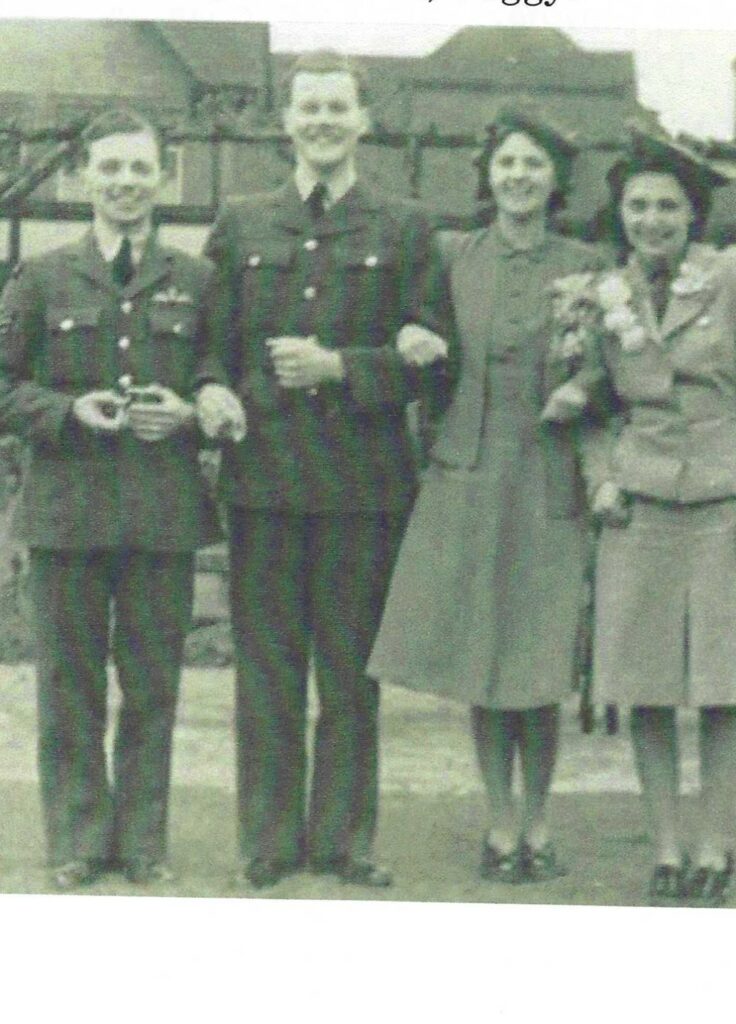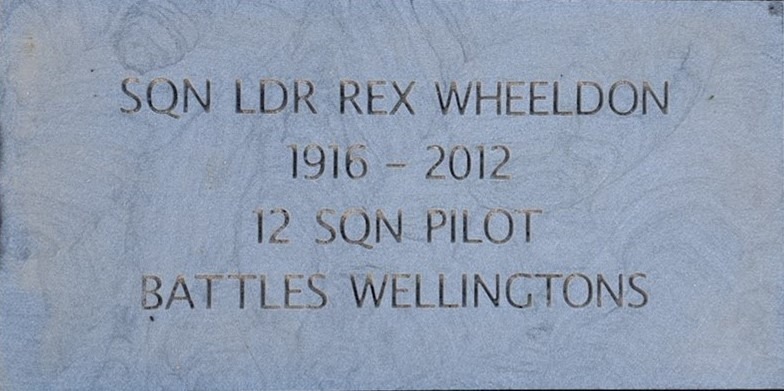I am Roy Gould’s godson.
He and my father, Rex Wheeldon, grew up together in Clacton between the wars and remained best friends until they died within a few months of each other in 2011 or 2012. Living some 150 miles apart, they had not seen each other for some time.
Three model-aircraft-mad friends, the other being Maurice Carter, left school in the early thirties and parted company when Rex left to sign up for the RAF in 1936. Roy continued his studies to qualify as an architect in his father’s footsteps. Maurice also joined the RAF on being called up, but unfortunately was killed when his glider crashed during the Normandy landings.
By the outbreak of WW2, Rex was already flying Battles, which he later flew on ops in France, after a spell on Tiger Moths in the Communications Squadron during the phoney war.
Roy was called up in the Autumn of 1940, applying to join the RAF, and succeeding in gaining his wings in 1941. He was persuaded to record his flying career from then until the end of the war in a self-published book, written 65 years after his last flight, in 2006.
His flying record was extraordinary, working his way up to a full tour on Lancasters, and flying fifteen different types, including the Spitfire and the Hurricane. He was always based in the UK, spending much of his time in Lincolnshire, and came through the war unscathed, but not without several ‘moments’. He landed at 51 UK airfields, and one in Germany, Gatow, during the Berlin Airlift. Roy accumulated 1755 hours flying time by the end of the war, and only once took the controls of an aircraft afterwards, when his daughters bought him a flight out of Clacton airfield for his 90th birthday.
Rex brought one of the few surviving Battles back from France, and then converted to Wellingtons when 12 Sqn were based at Binbrook. In 1942 he was posted to the BAT Flight, teaching pilots to ‘fly the beam’, the early radar landing system. After the war he was taken off flying duties and joined the Secretarial branch of the RAF until his retirement in 1967. While based at Bentley Priory in the early 60’s he gained his PPL and bought a Hornet Moth which he flew back to land on the farm near Lincoln, weather permitting, then keeping it at Binbrook until retirement.
Was it a coincidence that he sold it after I gained my licence at 17? Perhaps not!
Rex became an AFI at the Lincoln Aero Club, adding another 600hrs flying time, bringing his total to just under 3500hrs.
I was born just after the war and Roy became my godfather, as my parents were godparents to his daughters. I have very little recollection of him, but do remember visiting the family in Clacton when I was probably 10 years old.
Roy had sent my father a copy of his Memories, which I acquired on my father’s death, but which, to my chagrin, I have mislaid, probably lending it to a friend and both of us forgetting.
I live not far from the IBCC and have watched it develop, visiting regularly. The last time I determined that I would like to add a dedication to my father on the Ribbon of Remembrance, the inscribed stones lining the path to the Memorial. There are already hundreds of these, and it is virtually impossible to take them all in. So it was a great surprise when I saw one dedicated to my godfather, particularly when I had such difficulty finding it again, even though I thought I knew more or less where it was!
This gave me the opportunity to get back in touch with Roy’s daughters, Christine and Paula, who very kindly sent me their father’s own copy of his Memories.

